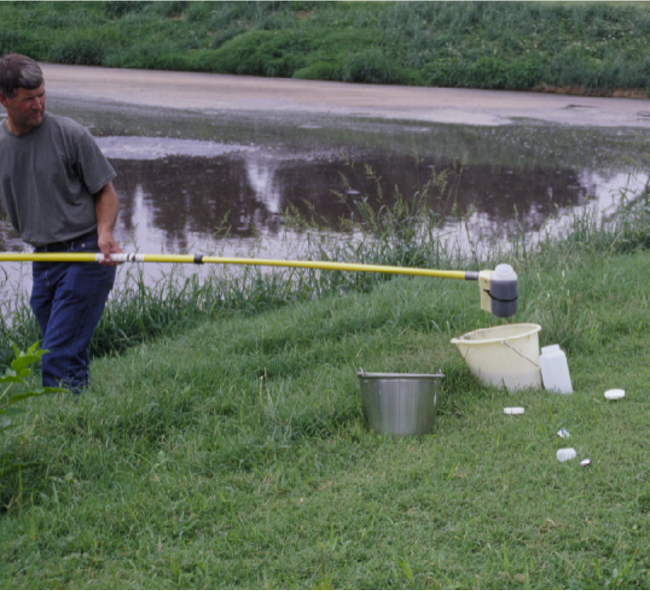2024 Sampson Extension Sample Collection Dates
go.ncsu.edu/readext?979308
en Español / em Português
El inglés es el idioma de control de esta página. En la medida en que haya algún conflicto entre la traducción al inglés y la traducción, el inglés prevalece.
Al hacer clic en el enlace de traducción se activa un servicio de traducción gratuito para convertir la página al español. Al igual que con cualquier traducción por Internet, la conversión no es sensible al contexto y puede que no traduzca el texto en su significado original. NC State Extension no garantiza la exactitud del texto traducido. Por favor, tenga en cuenta que algunas aplicaciones y/o servicios pueden no funcionar como se espera cuando se traducen.
Português
Inglês é o idioma de controle desta página. Na medida que haja algum conflito entre o texto original em Inglês e a tradução, o Inglês prevalece.
Ao clicar no link de tradução, um serviço gratuito de tradução será ativado para converter a página para o Português. Como em qualquer tradução pela internet, a conversão não é sensivel ao contexto e pode não ocorrer a tradução para o significado orginal. O serviço de Extensão da Carolina do Norte (NC State Extension) não garante a exatidão do texto traduzido. Por favor, observe que algumas funções ou serviços podem não funcionar como esperado após a tradução.
English
English is the controlling language of this page. To the extent there is any conflict between the English text and the translation, English controls.
Clicking on the translation link activates a free translation service to convert the page to Spanish. As with any Internet translation, the conversion is not context-sensitive and may not translate the text to its original meaning. NC State Extension does not guarantee the accuracy of the translated text. Please note that some applications and/or services may not function as expected when translated.
Collapse ▲The manure generated from animal production remains a valuable crop fertilization resource. Animal manure provides all essential crop nutrients, but it is important that the manure is properly analyzed so farmers can know exactly what they are applying to their land and crops. When using best management practices, animal manure is an extremely valuable resource that helps increase crop yields.
For our swine farmers, our state general permits require waste analyzation by a certified laboratory within 60 days of any land application. Soil sampling is required every three years for irrigation fields at a minimum. Fertilizing without current sample results is a guessing game and runs the risk of under or over-applying our fertilizer resource. Knowing the current nutrient content of animal waste and matching that to the nutrient needs of the receiving crop will produce a good crop yield and won’t pose detrimental effects to the environment.
The Agronomic Division of N.C. Department of Agriculture and Consumer Services analyzes lagoon samples, interprets analytical results, and provides management recommendations to the producer for a fee of $8.00 per sample. To assist farmers in securing this report, Sampson Cooperative Extension schedules waste sample collection days every other month and provides transportation of the samples to the NCDA agronomic lab in Raleigh. In Sampson, we have established the following collection dates for 2024. Farmers may bring waste or soil samples anytime from 8:00 a.m.–5:00 p.m. to Sampson Cooperative Extension (George Upton livestock facility) at 93 Agriculture Place, Clinton NC 28328.
- February 6 (Tuesday)
- April 2 (Tuesday)
- June 4 (Tuesday)
- August 6 (Tuesday)
- October 1 (Tuesday)
- December 3 (Tuesday)
When taking an animal waste sample for lab analysis, it is important to get a representative sample that reflects the average composition of the resource to be crop applied. For the swine farmer, multiple subsamples measuring half a pint to one pint each from 10 – 12 sites around a lagoon should be collected. Always use a clean plastic container for collecting, mixing, and storing waste samples as glass can break and galvanized metal containers can cause contamination and introduce micronutrients into the sample. It is best to take the samples at a depth of one foot and at least six feet from the bank. Once collected, these subsamples should be mixed together to form a representative sample that is stored in a clean plastic container three-fourths full. Taking the time to gather animal waste samples properly will give the producer an accurate account of the nutrient content of this fertilizer resource and produce good crop yield after land application.
For any questions, contact Max Knowles at N.C. Cooperative Extension in Sampson County at (910)592-7161.
__________________________________________________________________________
The Importance of Animal Waste Analyzation for Proper Crop Application. Adapted from “Waste Analysis” by D. Crouse, K. Hicks, May 11, 2015.
United States Department of Agriculture, Natural Resources Conservation Service (USDA-NRCS). 2011. Technical Standard 590 for Nutrient Management Planning. United States Department of Agriculture, Natural Resources Conservation Service. Raleigh, NC.




